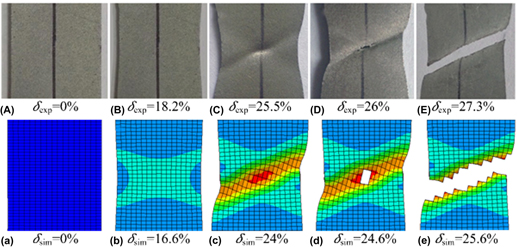Article contents
Analysis on fracture initiation and fracture angle in ductile sheet metal under uniaxial tension by experiments and finite element simulations
Published online by Cambridge University Press: 10 November 2016
Abstract

The instability and fracture process during uniaxial tension was observed from load-stop tensile tests and finite element simulation. The results indicate that at the end of instability, the direction of the maximum principle stress near the necking groove turns to being perpendicular to the groove. This tensile stress is critical to the growth of fracture. The fracture initiates from the internal of the sheet at the center of volume where the two local necking grooves intersect. Material here is under triaxial tensile stress state and the principle stresses in all three directions are the largest. Once the initial crack occurs, it propagates along the zero-strain-rate necking groove. Moreover, the final fracture angle between the fracture plane and the tensile axis is always larger than theoretical value. An important reason is the ignorance of the triaxial stress state evolution during instability in theoretical calculation.
- Type
- Articles
- Information
- Copyright
- Copyright © Materials Research Society 2016
References
REFERENCES
- 11
- Cited by





